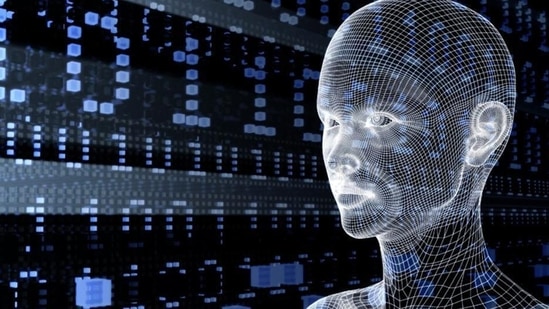Why human augmentation (Human 2.0) is transforming our world
This article is authored by Ravi Changle, director, AI & emerging technology, Compunnel Digital.
In recent years, the concept of human augmentation has gradually become a reality, rather than a mere figment of imaginative science fiction. This field which encompasses wearable devices and genetics is radically transforming our world. In order to explore this subject matter, it is important to examine how it has developed into Human 2.0, the current applications for it as well as its larger context in terms of facts, figures, science, and spirituality.
Human augmentation focuses on improving human physical and cognitive capabilities using technology. Gartner defines this as including enhancements such as limb prosthetics that go beyond what natural humans are capable of doing. At present the market for these technologies is booming; the global human augmentation market is expected to reach $885.93 billion by 2032 growing from $201.59 billion in 2024 at a compound annual growth rate (CAGR) of 20.3%.

Exoskeletons are man-wearable machines that help improve the strength and endurance of an individual. The exoskeleton market was estimated to be worth about 127 million dollars in 2019 and is expected to reach $5.4 billion by 2028. These appliances have been increasingly employed across industries such as manufacturing and construction for reducing workplace injuries and increasing productivity. For instance, Ford has seen a 70% decrease in ergonomic injuries among assembly line workers using exoskeletons. In the medical field, exoskeletons support rehabilitation by restoring mobility for patients with spinal cord injuries and strokes.
The brain-computer interfaces permit direct associations between the mind-brain interface and outside gadgets. Furthermore, the brain-computer interface (BCI) market is forecasted to grow from about $1.5bn in 2021 to around $3.85bn by 2026. Considering that BCIs are designed majorly to assist people who suffer from severe disabilities, they provide communication and control channels through which it can be done. The likes of Neuralink lead in this field, their mission is to build high-bandwidth brain-machine interfaces that could restore vision or hearing or enable brain-to-brain communications.
The advent of Human 2.0 technology is increasingly blurring the boundaries between humans and machines, challenging our understanding of identity and spirituality. Drawing on spiritual insights from texts like the Bhagavad Gita, we can explore these complex issues from a deeper perspective.
- Spiritual essence: According to the Bhagavad Gita, life and consciousness arise from a spiritual essence (atman) that transcends physical matter. This idea challenges the belief that consciousness can be fully explained by technological or physical enhancements.
- Limits of materialism: As technology advances, we are prompted to reflect on the limitations of materialistic views. Spiritual teachings suggest that while technology can enhance physical capabilities, it cannot replicate the true essence of consciousness or the profound depths of human experience.
- Purpose of human existence: Spiritual philosophies, including those in the Gita, view human life as a journey of self-discovery and spiritual growth. Our experiences are seen as opportunities for the soul’s evolution and realisation of higher truths.
- Integration of technology: While embracing technological advancements, we should remember that we are spiritual beings experiencing human life. The Gita encourages the mindful use of technology, ensuring it aligns with our spiritual purpose and ethical values.
- Stewardship of technology: The Gita’s teachings on duty (dharma) emphasise our responsibility to use technology ethically and responsibly. As we blur the lines between humans and machines, we must uphold principles that honour the sanctity of life and promote harmony among all beings.
- Impact on relationships: The integration of technology affects our relationships with ourselves, others, and the environment. The Gita’s teachings on compassion and interconnectedness guide us in fostering empathetic connections amidst technological advancements.
- Cognitive enhancement: BCIs are being developed to treat neurological disorders, offering potential benefits to millions. However, the long-term effects on the brain are still under study, raising concerns about safety and efficacy.
- Genetic engineering: Technologies like CRISPR show promise in treating genetic diseases but also pose ethical dilemmas regarding human gene editing.
- Soul and technology: The integration of technology into our bodies prompts reflection on the essence of our being. Many spiritual traditions view the soul as the core of human existence, a concept challenged by human enhancement technologies.
- Purpose and meaning: The pursuit of augmentation should align with our higher purpose. Technologies should aim to uplift humanity, foster empathy, and deepen our connection with the world.
- Interconnectedness: Human augmentation can enhance our sense of interconnectedness by transcending physical limitations. However, it also risks alienating us from our natural selves and the environment.
- Ethical stewardship: Ethical use of augmentation technologies is crucial. We must ensure these tools benefit all of humanity and do not create new forms of inequality or harm.
By considering these perspectives, we can navigate the integration of Human 2.0 technologies in ways that honour both our spiritual and ethical responsibilities.
The potential of human augmentation is vast, from enhancing memory and cognitive processing through neural implants to optimising physical performance through genetic modifications. However, it is crucial to balance the benefits of these technologies with ethical considerations to ensure they serve humanity positively and equitably.
Human augmentation holds the promise of transforming lives by augmenting our physical and cognitive abilities. By addressing ethical concerns and ensuring responsible development, we can harness these technologies to enhance human potential while maintaining our core values and identity.
This article is authored by Ravi Changle, director, AI & emerging technology, Compunnel Digital.





